Jeff Lee is a principal with DCM Ventures of Menlo Park, CA.
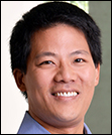
Tell me about yourself and the company.
DCM is a global venture firm. We manage about $2.5 billion investing in IT-related opportunities in the US with offices in Beijing as well as Tokyo. I’m a trained engineer, a product guy. I spent some time as an investor and then as an entrepreneur and then an investor. I’ve seen both the operating side as well as the investing side and the product-building side of technology companies.
Your world is mostly young, West Coast, and high tech. Is it hard to avoid having that mindset unduly influence your view of companies?
It’s funny you say that. I did my undergrad out here at Stanford and I spent five years at Cisco right in the middle of the boom and bust. I’ve seen both sides of that in the Valley. I intentionally left the Valley for eight years and spent the last eight before moving back up here in LA to see a different perspective on the rest of the country, how companies are started. I’ve intentionally gotten that experience to have a different perspective.
Where are the geographical pockets of innovation and which will be most important?
Around the country, Silicon Valley has always been the capital for technology. With globalization and the represented aspects of that domestically, you see a lot of interesting things coming out of LA, you see a number of interesting things coming out of New York. Boston historically has been a bit of a hub. If you think globally, you’re seeing a lot of stuff coming out of Asia as well, as far as big companies getting built and technology and stuff that’s frankly going cross-border.
Healthcare innovation often comes from the presence of a big vendor in a location like Madison, Wisconsin or Malvern, Pennsylvania. Do those areas spawn their own innovative ecosystems?
I suspect they do. One of the challenges, especially with innovation in the healthcare IT sector, is you really need a balance of healthcare expertise, but you also need the entrepreneurial blood. I think there may be some pieces of those coming out in places like Madison, Wisconsin.
It’s difficult to find the folks that are truly going to create game-changing companies. Not to say that there won’t be, but where you look geographically, some of the places that are hubs of innovation that are growing where there’s an increasing expertise in the healthcare space are where we tend to see some of the big opportunities emerging.
Do you sometimes look at a little company’s pitch and tell them that while they’ve built an interesting and potentially profitable small business, you just don’t see that it can scale to the point that would get you interested?
Definitely. There’s a bunch of statistics around venture capital and companies that hit. There are very few companies where venture makes a lot of sense, or when you look at the broad ecosystem of funding, small business is probably five percent or less.
We see a lot of those things. We are one solution of many for funding early-stage small companies. We tend to be the high-risk, high-return piece of it where there’s a good chance it might go to zero, but there’s a possibility that it could be a large, substantial public company. Those are the opportunities that we go after.
How important is the personality or the outlook of the founder when trying to identify those potential winners?
In my view, it’s the single most important factor. If I were to paint a broader picture around it, you take a great founder and management team in a big market. Those are really the two ingredients you look for and a great opportunity for us.
How do you project the timeline of how far the founder can carry you and then at what point you’re going to bring in a different managerial skill?
They depend on a case-by-case basis. Our ideal situation is a founder who’s the CEO of the company who can go all the way. I think that the passion that a founder has for a company and the desire to see it successful, which frankly sometimes is irrational of sorts, is really what it takes to get some of these companies all the way.
I’ll say that we infrequently will go into a investment thinking or knowing that the founder will only go so far. Usually it causes a lot of turmoil, and more often than not, will in essence sink the company at some point.
That being said, I think understanding that, and if that’s what the founder wants and acknowledges that, then we certainly can help in identifying the right talents or helping them think through the timing or the personnel that they should be looking for. We are active investors, but we will typically take a number two to the founder where’s it’s really their company, it’s not ours. That’s philosophically how we look at it.
How much extra value or extra credibility does a company have when the founders done it before?
It makes a huge difference if somebody’s been able to do it before. It’s the best indicator of future success. Again, every situation is case by case, but especially I would say in the sectors like healthcare where there’s a lot of innate domain knowledge that needs to be hedged, how to operate in it, your having that background is really important.
It’s always big news when a company is sold. What’s it like behind the scenes trying to get a company to that point? How do you find potential buyers? Are the sellers always happy to get a bunch of cash and turn over the keys to someone else?
The best exit opportunities are usually not being sought out and usually are on the backs of the success and high growth of a company. Before we get to that point, what we are focused on is always building a large, scalable, fast-growing business. If inbound interest comes in, we’ll seriously consider it. We typically are swinging for home runs, so more often than not if a company is doing well, we’re going to double down and help support that company to keep on going.
Sometimes to your point an attractive offer comes in. Depending on timing, you might then take it through a process and go talk to other folks and see what exits might be available. Obviously, if it’s an IPO, that’s a slightly different animal.
That’s typically how the best exits happen. Usually the ones where you really need to build a process around it are the ones that aren’t doing nearly as well.
If I’m running a really successful company and I’ve got funding and the growth is there, do I get a lot of calls out of the blue? Who’s calling me and what are they saying?
The calls don’t go to me typically. The calls would go to the CEO and the founder. I think a lot of the times they come from business partners. They might be the development partners, they could be customers. They come from the ecosystem.
I had this experience myself. I had started a company in the small business group buying space. As we are building and we were talking to a number of our distribution partners, one of them asked, "Would you consider a possible acquisition as opposed to just a partnership?" That was the beginning of a conversation that led to our eventual acquisition.
That’s typically how it happens. Usually, it’s not unsolicited. Usually, it’s a ongoing conversation or at least the relationship over six to 12 or even more months before a company is really going to look at writing a hopefully large check to acquire another company.
As an investor, how much influence do you expect to have?
Our typical type investment, which is I think a generally true for most in the venture industry, is we’ll write a large enough check and take probably 20 to 30 percent of a company, typically to warrant a board seat. We will typically not go in and operate the company, but we will help guide the strategy of the company, help guide the fundraising strategy of the company. We will make business development introductions to meaningful partners that could change the trajectory of the company. We’ll spend time recruiting for and qualifying if it’s a CEO or senior executives on the team, folks that really will come in and make a material change on the opportunity of the company.
What’s it like doing what you do?
It’s awesome. I love it. My day is spent predominantly meeting a lot of very interesting people. On the early-stage side, it’s meeting entrepreneurs, hearing about what they’re passionate about, where they think the big opportunity is. It could be in concert with a financing that they’re trying to put together or maybe getting to know people before that.
Part of it is getting to know folks in the ecosystem such as yourself or in the healthcare space. It might be other operating execs, people at large companies who understand what they’re looking at strategically or how we might be able to orchestrate some partnership between some of our portfolio companies and their company.
Then obviously getting to know other investors as well. Once we fund a company, when we look at a next major round of financing, we typically look to get an outsider to add additional value to the company or some of those that in reverse are doing smaller checks than us. They might see the opportunities to us.
Those are the broad pieces of the deal piece of it. Then part of it is working with our companies and our entrepreneurs. Some of that happens in the board room, where there’s usually it’s monthly. Usually there’s an update about the business and a discussion around the critical issues in the business both good and bad. Then we talk about, "What do we need to do to get to the next step? How do we work through the problems that a company is having?"
Frankly, a lot of the work happens outside of the board meeting itself. Coffee with the founder, sharing some of those similar issues or concerns, introducing people that maybe they need a VP of sales and if you can think of somebody who would be great, making that introduction or again business development partnerships where they’re looking for a channel to get to other customers. We can make those kinds of introductions.
That’s typically how we work with companies. I think a board meeting is really a formalized way of driving that discussion, but those discussions happen offline and hopefully often.
Are there any technology areas that you like really well or that your firm would tend to stay away from?
Broadly, just looking at technology, the world has shifted from the way it was 10 or 20 years ago. This partially and directly answers your question, which is I think a lot of models had moved away from what I’ll call true technology and they’ve gone more to business model innovation.
With globalization, with the advent of outsourcing, it’s a lot easier to find talent to actually develop technology or software than it has been in the past. A big piece of it is, where’s is there empty space that you could leverage technology to create a sustainable business?
That being said, I do think there are a few interesting instances around what I’ll call real technology or hard technology. One that is not in the healthcare space but is a very interesting company that a friend of mine invested in is a company called Planet Labs. It’s literally NASA rocket scientists that have figured out how to build satellites for $20,000 and deploy them for under $50,000 or $60,000. Because of the cost basis and their ability to do this, they’re able to put up all these micro satellites in the space and basically give you almost a real-time picture of what’s happening, literally, on the planet. You can see deforestation, you can see weather patterns, and you have access to something you never had before.
We’re investors in a company called Athos, which developed a shirt with fabric that can measure your muscle twitch response. The product hasn’t been released yet — it’s in beta. What it’s able to do is determine how hard your muscles are firing and determine how to optimize your workouts, determine how to make sure that you don’t get injured. There’s a lot of other applications like that.
We’ve done a number of core technology investments as well. Lithium ion batteries, so your smartphone can last longer.
One company that might be a little bit more relevant is Augmedix. It leverages Google Glass. Attached in the back of the Google Glass is a scribe that might be in India or Bangladesh or some other place. They basically offload for a doctor the hour or two hours that they spend writing up notes every day. Because it’s a live video feed, because they get to know the doctors and what they’re looking for and how to input data, in essence you can take an hour and a half of doctor time that’s wasted into five or 10 minutes. That’s a way of leveraging technology and new business model where there’s a little bit more of a fundamental technology than the business model innovation.
Do you have any final thoughts?
There’s a big opportunity in the healthcare IT space. It’s obviously a large part of GDP and with the introduction of technology through EMR into the business and the pervasiveness of mobile, we spend a decent amount of time looking at where those convergence opportunities are. Augmedix, like I mentioned. We’re in a company called Stride Health, which is centered around providing better insurance solutions to contract workers.
We continue to look at a few things. There’s probably one or two projects that are in the works. We think there’s a big opportunity in the space.
Comments Off on HIStalk Interviews Jeff Lee, Principal, DCM Ventures

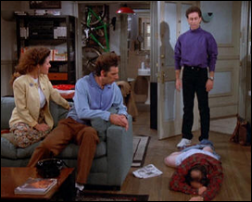











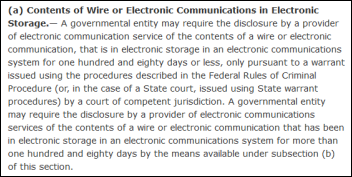
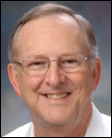
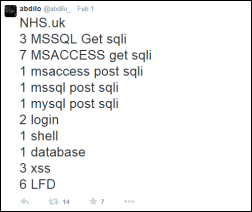





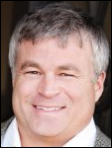




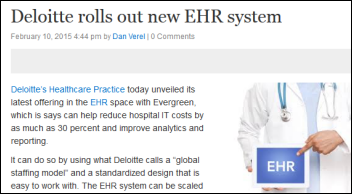


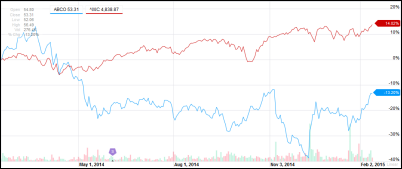
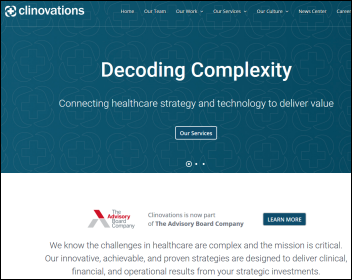













The CEO sentenced to jail for massive healthcare fraud will get pardoned in a week.